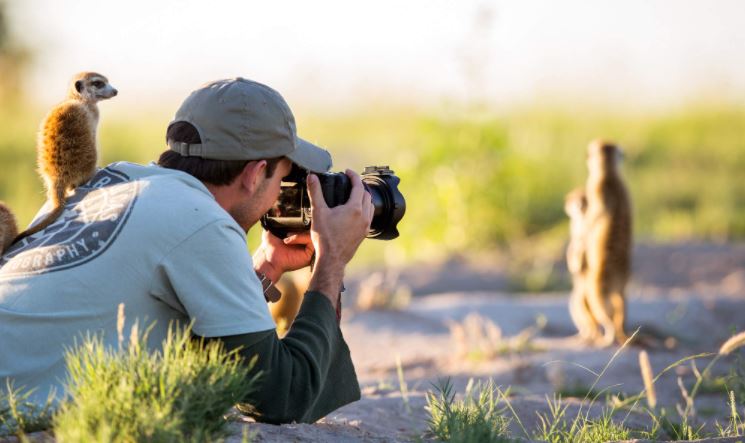 Since the time of DSLRs had its fair time of hype, there has been a heap load of newly discovered people that have been intrigued by photography and have been wandering into natural life photography.
Since the time of DSLRs had its fair time of hype, there has been a heap load of newly discovered people that have been intrigued by photography and have been wandering into natural life photography.
It appears to be one of the natural and most candid forms of photography, just like scenery photography. This growth and interest in photography have genuinely seen an enormous development in demand for the best photography course online in the recent couple of years, which has led to people pursuing a future with the privilege of these platforms.
The wild and historical local nations of South Africa are beautiful to natural photography hunters.
However, it is essential to invest some energy in the prominent targeted locations for the photography gathering. Let yourself feel the power and the vibrations of the plane while helping to connect and analyze to favor your work with the best outcome of classic exclusive pictures of rare wildlife species.
-
Know your stuff
This sounds like the greatest banality. However, it is the most legit tip.
All things considered (in light of any experience), it is important to get in touch with your camera and always be ready for a shot as you never know what you may miss because of slack in the next few seconds. If you are not profoundly acquainted with your camera’s settings or the capacities of your current scenery, you will either miss the shot or blow the pictures because you didn’t take proper measures. Know the correct base shade speed from all the series at which you can get the sharpest picture with clarity from your camera/focal point combo. In addition to that, it is also important to Know any additional edges and measures of features that the in-camera or in-focal point adjustment gives you. Moreover, it is also vital to Expertise to rapidly have the ability to switch between modes. Be knowledgeable in the concepts and theories of your stuff so that at any given point, you could change the camera’s ISO setting and still accomplish the good outcomes you desire.
-
Know the untamed life
This should be an obvious one since many amateur photographers with DSLRs depend on catching a candid shot of temporary snapshots of characteristic deep history since it prevails to have the option to anticipate your subject’s conduct in advance fairly. In truth, only one out of every odd species is pretty much as unsurprising as the following. In any case, there is always depth and art in the being of each creature or species. Realizing your content can have the effect of being prepared for having the drive to spot the perfect second of the particular subject and watching in misery as it flies by.
-
Presently, there is just a single method to become acquainted with amateur photography life
Invest energy with it. Don’t simply stick around for a couple of months or years, for that matter, and search out the following subject while just confining yourself to it. Sit with natural life and the environment around you (you never know what may show up for you).
-
Work your way through
The primary suggestion that is gotten from any expert photographer beginning shooting is to adhere to the long periods of brilliant light.
This implies starting promptly in the first part of the day, when the sun is scorching bright and being in the field before dawn, and going out in the early evening to take advantage of the last long periods of daylight. The light in the late morning (late noon) is cruel and denies pictures of that spirit that is needed. The special case is on cloudy days when the mists behave like a huge softbox and channel out the light equally.
Since photography is tied in with the art of life with light, you need to realize how to utilize the light for your potential benefit in natural life photography. Frequently, we will end up in a position where the light isn’t ideal or seems dull, dusky, the light is sweet, however the circumstances, which would be learned to work within more detail with the best photography course online.
-
Shoot more extensive and deeper (shoot nearer )
Such a large number of untamed life photographers get stuck in a situation where it turns into a fixation to have the longest/greatest focal point conceivable. Presently, this is an area subordinate, as you may require special lenses to get a shot in dense and vast forests. In any case, the issue that needs to be addressed is more identified with the fixation to get as close to the creatures and disconnect them absolutely from their current circumstance without scaring them away. The outcome is often delightful and natural 9as it should be), with a smooth foundation and no thought of the genuine climate where the creature gets itself.
All things considered, it is vital to challenge yourself to take shots at a more extensive point to give the watcher a superior glance and thought of where you took the picture and the beauty of nature (the subject needs to squeeze out a living in nature). This is relevant to any species you photo, from a snake to a deer to a cheetah.

